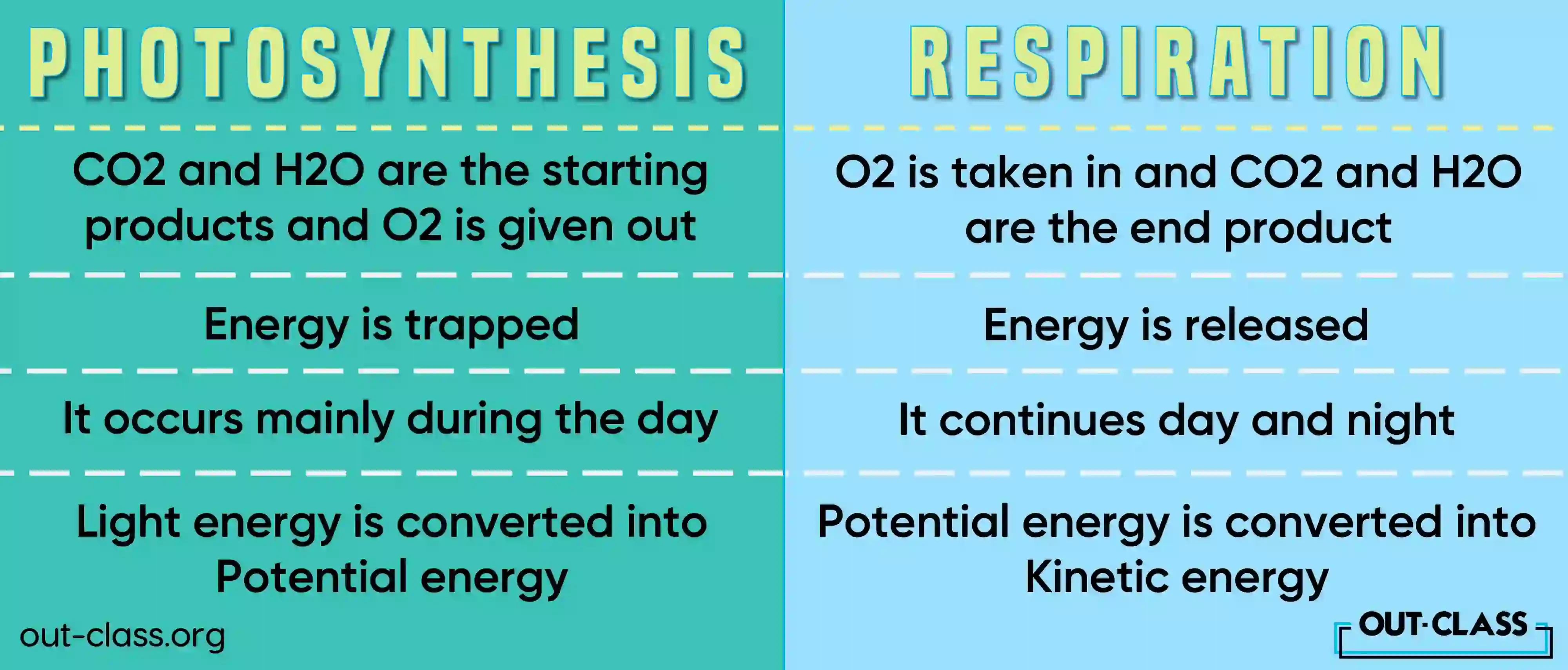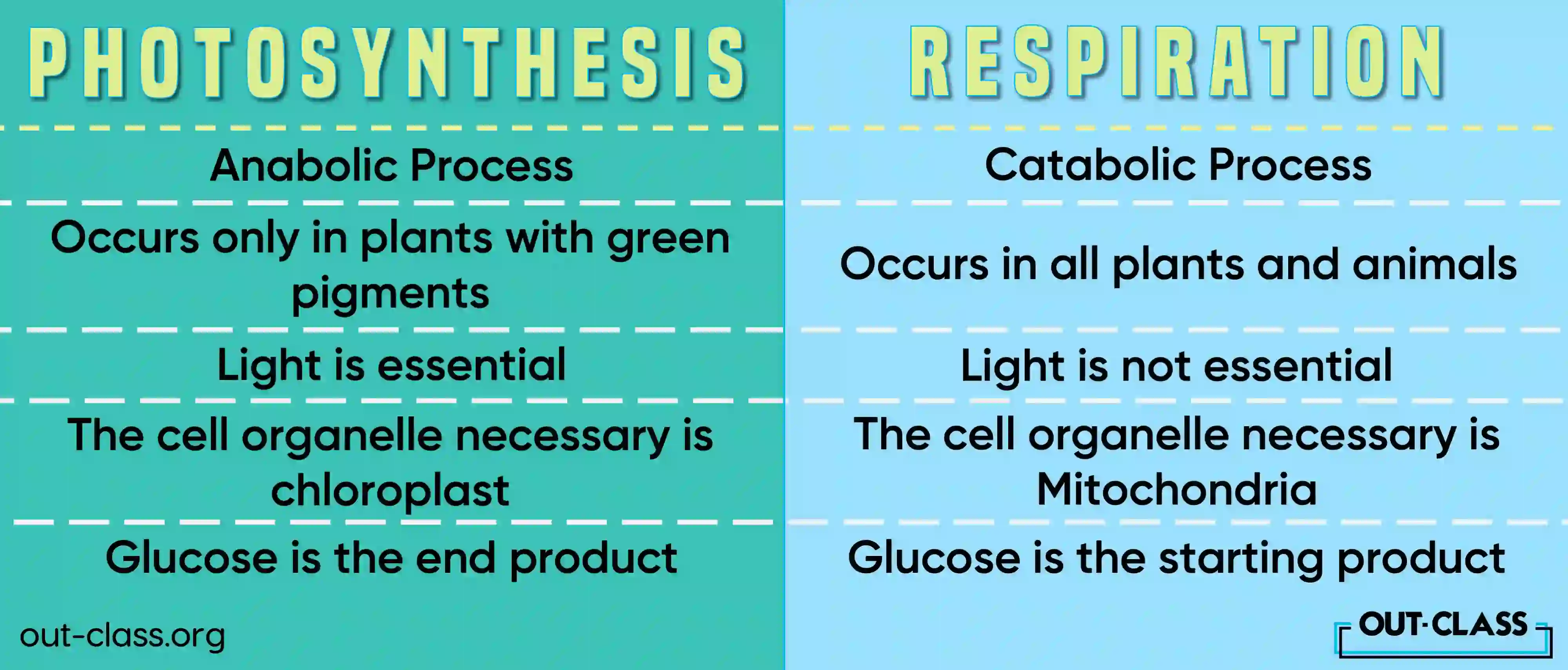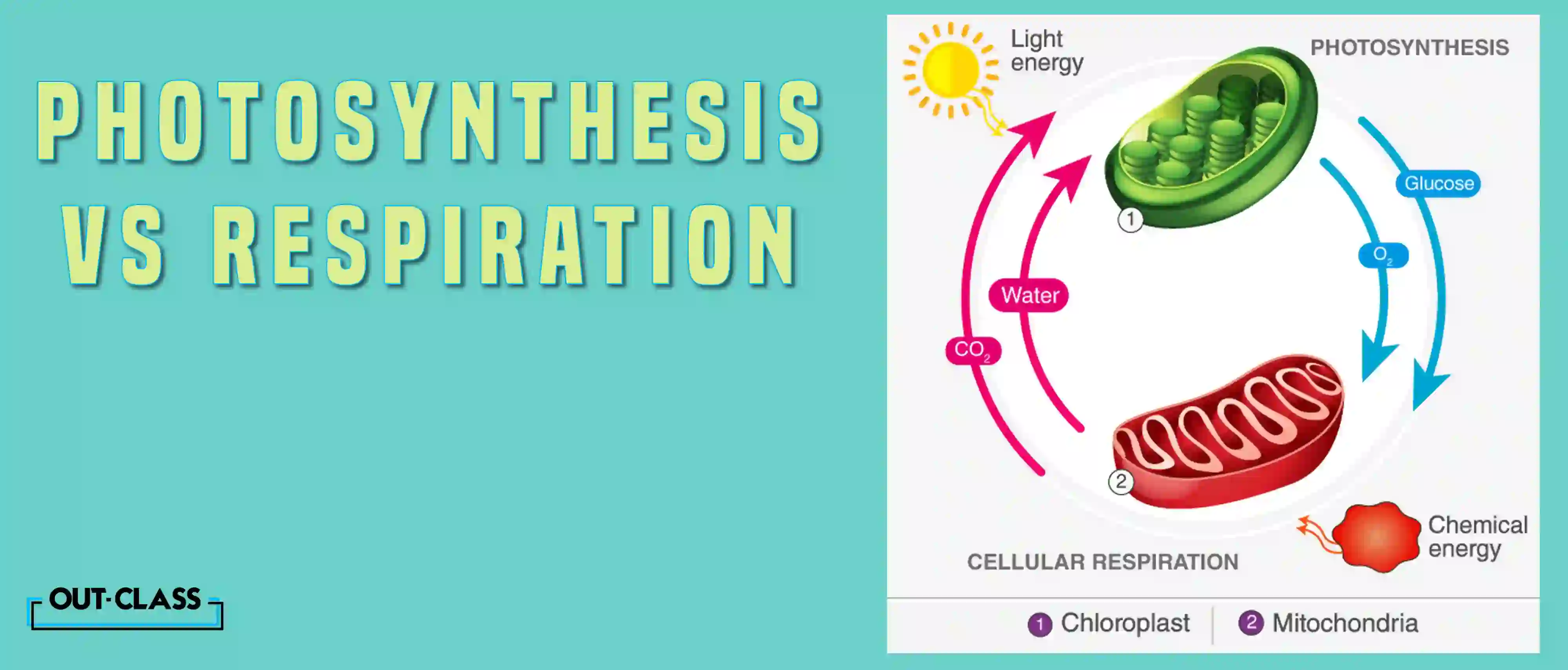Photosynthesis and respiration are two fundamental processes that sustain life on Earth. They are essential for the survival of plants, animals, and other organisms. While they are closely related, there are significant differences between them. So, let's explore the differences between photosynthesis and respiration, their similarities, and how they are interconnected.
What is Photosynthesis?
Photosynthesis is the process by which green plants, algae, and some bacteria convert light energy, usually from the sun, into chemical energy, in the form of glucose. This process occurs in the chloroplasts of plant cells and involves carbon dioxide and water. The general equation for photosynthesis is:
6CO2 6H2O + light energy → C6H12O6 + 6O2
Read more: Photosynthesis
What is Respiration?
Respiration refers to a process where organisms convert glucose and oxygen into energy, carbon dioxide, and water. This process occurs in the mitochondria of cells and is essential for producing the energy required for various cellular activities. The general equation for respiration is:
C6H12O6 + 6O2 → 6CO2 + 6H2O + energy
Difference Between Photosynthesis and Respiration
The difference between photosynthesis and respiration can be summarized as follows:
-
Purpose: Photosynthesis converts light energy into chemical energy (glucose), while respiration converts chemical energy (glucose) into usable energy (ATP).
-
Reactants and Products: In photosynthesis, the reactants are carbon dioxide and water, and the products are glucose and oxygen. In respiration, the reactants are glucose and oxygen, and the products are carbon dioxide, water, and energy.
-
Location: Photosynthesis occurs in the chloroplasts of plant cells, whereas respiration occurs in the mitochondria of all eukaryotic cells.
-
Energy Flow: Photosynthesis stores energy in glucose molecules, while respiration releases energy from glucose molecules.
Similarities Between Photosynthesis and Respiration
Despite their differences, there are several similarities between photosynthesis and respiration:
-
Energy Transformation: Both processes involve the transformation of energy from one form to another.
-
Involvement of Electron Transport Chains: Both processes use electron transport chains to produce energy.
-
Role in the Carbon Cycle: Photosynthesis and respiration are crucial components of the carbon cycle, maintaining the balance of carbon dioxide and oxygen in the atmosphere.
What is the Relationship Between Photosynthesis and Respiration?
To understand the relationship between photosynthesis and respiration, it's essential to recognize that these processes are interdependent. The oxygen produced during photosynthesis is used in respiration, while the carbon dioxide produced during respiration is used in photosynthesis. This cyclical relationship helps sustain life by maintaining the balance of oxygen and carbon dioxide in the environment.
Compare and Contrast Photosynthesis and Respiration
To compare and contrast photosynthesis and respiration, consider the following points:
-
Energy Source: Photosynthesis uses light energy, while respiration uses chemical energy from glucose.
-
Overall Function: Photosynthesis builds glucose molecules, while respiration breaks them down.
-
Byproducts: Photosynthesis produces oxygen as a byproduct, while respiration produces carbon dioxide and water.

Photosynthesis and Respiration Diagram
A photosynthesis and respiration diagram can visually illustrate these processes and their interconnections. Typically, such a diagram would show the chloroplasts and mitochondria, highlighting the flow of energy and exchange of gases between the two processes.
Conclusion
Photosynthesis and respiration are two critical processes that support life on Earth. The difference between photosynthesis and respiration lies in their roles, reactants, products, and locations within cells. Despite these differences, they share similarities in energy transformation and their essential roles in the carbon cycle. Understanding these processes helps us appreciate how photosynthesis and respiration are alike in that they both sustain life by converting energy and maintaining ecological balance. By studying these processes, we gain insights into the fundamental workings of life on our planet.
FAQs
Q. What is the main difference between photosynthesis and respiration?
Photosynthesis converts light energy into chemical energy in the form of glucose, while respiration converts chemical energy from glucose into usable energy (ATP) for cellular activities.
Q. Where do photosynthesis and respiration occur in cells?
Photosynthesis occurs in the chloroplasts of plant cells. On the other hand, respiration takes place in the mitochondria of all eukaryotic cells.
Q. What are the reactants and products of photosynthesis?
The reactants of photosynthesis are carbon dioxide and water, and the products are glucose and oxygen.
Q. What are the reactants and products of respiration?
The reactants of respiration are glucose and oxygen, and the products are carbon dioxide, water, and energy (ATP).
Q. How are photosynthesis and respiration interconnected?
Photosynthesis produces oxygen, which is used in respiration, and respiration produces carbon dioxide, which is used in photosynthesis. This interdependence helps maintain the balance of oxygen and carbon dioxide in the environment.
Q. Why are photosynthesis and respiration important for the carbon cycle?
Both processes are crucial for maintaining the carbon cycle. Photosynthesis removes carbon dioxide from the atmosphere, while respiration releases it back, ensuring a balanced carbon cycle.
Q. What similarities exist between photosynthesis and respiration?
Both involve energy transformation, utilize electron transport chains, and play vital roles in the carbon cycle.
Q. How do photosynthesis and respiration contribute to ecological balance?
By converting and cycling energy and gases (oxygen and carbon dioxide), photosynthesis and respiration sustain life and maintain ecological balance on Earth.
Q. Can photosynthesis occur without light?
No, photosynthesis requires light energy, usually from the sun, to convert carbon dioxide and water into glucose and oxygen.
Q. What is the role of ATP in respiration?
ATP, or adenosine triphosphate, is the energy currency of the cell, produced during respiration to fuel various cellular activities.
Q. How do plants benefit from photosynthesis?
Photosynthesis provides plants with glucose, a source of energy and a building block for growth, and produces oxygen as a byproduct, essential for the survival of aerobic organisms.
Q. What would happen if photosynthesis stopped?
If photosynthesis stopped, plants and other photosynthetic organisms would be unable to produce glucose and oxygen, leading to a collapse in the food chain and a decrease in atmospheric oxygen, severely affecting all aerobic life forms.




